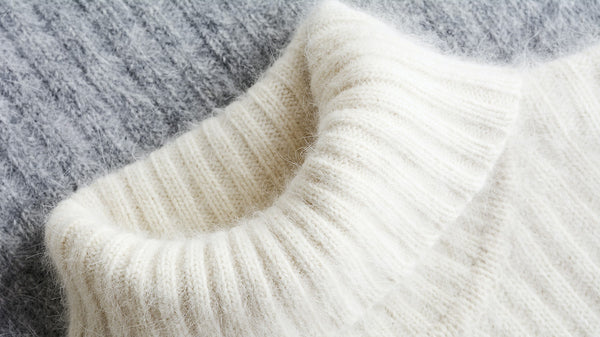How to Look After Your cashmere Garments and Keep Them Fresh
How to Look After Your cashmere Garments and Keep Them Fresh
Blog Article
Discovering the Various Kinds Of Cashmere a Natural Fiber for Ultimate Luxury
Cashmere, a natural fiber, is usually linked with luxury and comfort. However, not all cashmere is produced equivalent. From the richly soft Mongolian range to the lightweight warmth of Indian Pashmina, each type provides its very own unique functions and allure. The much more budget friendly Chinese cashmere, the traditional Scottish variation, and the premium Italian blend, all tell a various story of this impressive fiber. As we untangle the globe of cashmere, a deeper understanding of its true value and elegance begins to arise.
Recognizing the Extravagant Nature of Cashmere
Cashmere, usually associated with luxury and convenience, holds an one-of-a-kind appeal in the globe of all-natural fibers. Unlike other all-natural fibers, cashmere combines insulation with breathability, supplying exceptional comfort across varying temperature levels. Its shiny coating and soft structure add to its high-end appeal, justifying the costs cost that commonly comes with cashmere garments.
Simply What Is Cashmere and Where Does It Come From?

Cashmere is obtained from the soft undercoat of cashmere goats, largely found in Mongolia, China, Iran, and Afghanistan. This meticulous process adds to the deficiency and high expense of cashmere. With its beginning in the harsh landscapes of Asia, cashmere is a testament to nature's capacity to create luxury from difficulty.
Translating the Different Types of Cashmere
Understanding the various kinds of cashmere is key to valuing the high quality and one-of-a-kind qualities of this lavish material. Generally, cashmere is classified right into 3 kinds: raw, virgin, and recycled. Raw cashmere is straight acquired from the goat and is unrefined. This kind frequently consists of impurities such as dirt and crude hair. Virgin cashmere, on the other hand, is the pure, unrecycled material that is spun into thread for the very first time. It is the softest and most extravagant. Lastly, recycled cashmere is made from virgin product that has been previously utilized. It is re-spun and used in generating lower-cost cashmere products. Deciphering these types is the very first action in understanding the exclusivity and value of cashmere.

The Special Qualities of Each Sort Of Cashmere
Having actually discovered the different groups of cashmere, it emerges that each kind flaunts its special collection of qualities. Mongolian cashmere, for circumstances, is renowned for its premium high quality, because of Mongolia's extreme winters months that generate longer and finer fibers. Conversely, Chinese cashmere is frequently more budget friendly, though its shorter fibers can minimize longevity. Scottish cashmere is celebrated for its elegant gentleness, an outcome of the conventional water cleaning process utilizing Scotland's soft water. Italian cashmere, meanwhile, is famous for its skillful mixing and tinting methods, making it functional and vibrant. Indian cashmere, additionally known as Pashmina, is valued for its amazing lightness and warmth. Each kind, therefore, adds to the fabric's online reputation for luxury.
Why Cashmere Is the Embodiment of High-end in vogue
Cashmere holds a prestigious position in the globe of fashion, pertained to as a sign of deluxe and elegance (is cashmere a natural fiber). Cashmere is obtained from the fine undercoat of Himalayan goats, understood for their premium high quality fiber. Cashmere's unparalleled convenience and longevity make it a popular material in the production of high-end garments.
The Process of Making Cashmere: From Goat to Garment
The journey of cashmere, go to website from being an undercoat of a Himalayan goat to a glamorous garment, is an elaborate one. With the arrival of spring, farmers in Mongolia and China collect the woollen by combing the goats, making certain no damage is done. The gotten woollen includes crude external hair and soft downy undercoat. This mix is after that painstakingly divided, with just the soft down made use of for cashmere. This raw cashmere is cleaned, dyed and rotated right into yarn. The thread is after that woven or weaved right into materials. The final step includes cleaning and pushing to offer the textile its particular gentleness and warmth. From goat to garment, each action is a testament to the skill, creativity and persistence entailed in crafting cashmere.

Conclusion
Finally, cashmere, with its all-natural elegance and exceptional convenience, rules supreme in the world of deluxe fashion. The variety in types, ranging from the soft Mongolian, lightweight Indian Pashmina, cost effective Chinese, traditional Scottish, to the colorful Italian, reveals the adaptability of this natural fiber. The why not try here meticulous procedure of changing it from a goat to a garment further includes to its exclusivity, making cashmere the embodiment of class and luxury.
Cashmere, an all-natural fiber, is usually connected with luxury and convenience (is cashmere a natural fiber).Cashmere, commonly associated with high-end and convenience, holds an unique attraction in the world of natural fibers. Unlike various other all-natural fibers, cashmere combines insulation with breathability, supplying unequaled convenience across varying temperature levels. Cashmere is obtained from the soft undercoat of cashmere goats, mostly found in Mongolia, China, Iran, and Afghanistan. Cashmere is obtained from the fine undercoat of Himalayan goats, known for their helpful resources remarkable high quality fiber
Report this page